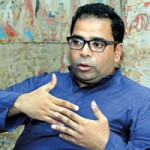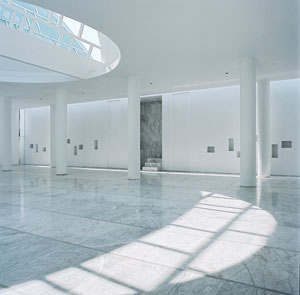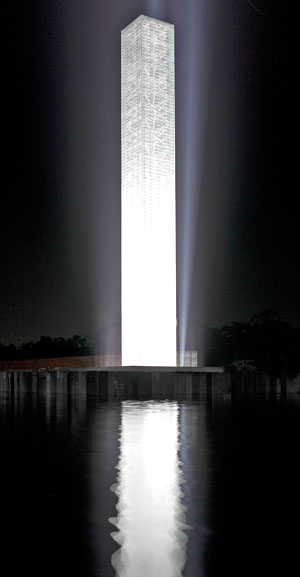Look to the past, the future and build to last

Kashef Chowdhury in Colombo. Pic by Indika Handuwala
That first, hesitant line of a sketch; this is what Kashef Chowdhury calls the poetry of good architecture. Chowdhury rarely uses the computer for his work- somewhat of an anomaly in the 21st century, he will laugh, nevertheless professing his preference for pencil and paper.
He falls quite contentedly in line, then, with the work ethic of the architect whose memory he honoured with a talk on June 10 at the Sri Lanka Foundation Institute. Chowdhury was in Colombo for the first time at the invitation of the Bawa Trust to deliver the annual Geoffrey Bawa memorial lecture. The Bangladeshi architect has been shortlisted twice for the Aga Khan Award for Architecture and has designed some of his country’s most prominent structures.
When we met at Bawa’s Colombo residence No 11, Bagatalle Road he was looking forward to visiting Lunuganga with architect C. Anjalendran. The latter takes this role of guide and companion in his stride; at the end of our interview he arrives in his custom designed three-wheeler to take Chowdhury and his wife Rajrupa for lunch at Barefoot, a popular haunt for many who counted Bawa among their friends.
Chowdhury became an architect not quite by plan-but not exactly by accident either. He wanted to be a doctor, but a change of circumstances led to him joining architecture school-his father was a civil engineer so this seemed like a natural career path to take, he says. It only took him three months to realize that architecture was what he was truly, unabashedly passionate about.
The architect put himself through a rigorous work-study schedule during his time at the Bangladesh University of Engineering and Technology and started his own practice, Urbana with a partner barely a year after he graduated. Together with Marina Tabassum, Chowdhury won a bid to design the Independence Monument and Museum to commemorate the events of Bangladesh’s liberation war. Several battles with a hierarchy steeped in establishment would follow; their age and experience was regularly questioned alongside the significant budget allocation for the project. It didn’t help that the proposal was ambitious; the monument was to be a tall glass tower in the heart of Dhaka with the museum underground (and would eventually take over 15 years to be fully completed).
It’s the kind of structure that induces a moment of awe, even when viewed as a photograph. Known as Swadhinata Stambha, the monument is a 50-metre high tower composed of stacked glass panels. It stands tall on 67 acres of land and was built on the place where the commander-in-chief of the East Pakistan Army signed the papers of his surrender. The immense water body surrounding the monument is drawn towards a small pond that channels the water downwards; inside the underground museum, the water falls in a straight column illuminated by natural light.
Since then Chowdhury has taken on projects that challenge traditional notions of space. For example, he designed the Chandgaon Mosque in Chittagong in 2007 to preserve the traditional role of a mosque as a place of spirituality and a gathering place for the community, but also to challenge the narrative of what a mosque should look like. It helped that a mosque has very few building specifications, he says, noting that a Hindu or Buddhist temple would have been much more challenging. Chowdhury was nominated for the Aga Khan in 2010 for his work on the mosque. The Aga Khan for 2016 also shortlisted another project designed by the architect-the Friendship Centre in Gaibandha.

Challenging traditional space: Chandgaon Mosque in Chittagong
Chowdhury finds his roots in history, place and a keen appreciation for the work of Louis Kahn, an American architect who designed the National Assembly Building in Dhaka. He strongly resists the idea of a signature style. “-isms may work for other people but they don’t work for me. I have very consciously avoided the idea of a signature style because a signature immediately dates the architect’s work.” Instead, he says, we must look into the future and to the past and build in a way that lasts. “I think that my duty as an architect is to contribute to built heritage.”
We return to his stubborn determination to continue working manually. Chowdhury is trained in AutoCAD but very quickly realized that the sure, precise lines of the software was not for him. “The first line has to be uncertain,” he says. “Otherwise you’re saying you know it all before you’ve begun. That uncertainty of the first line is the beauty of it, for me. (…) Today the kind of architecture that is happening around the world is very much because of computer based drawing. There are some striking buildings of course, but most are on the grid. I think they’re less creative than the buildings we used to build.”
He is also critical of superimposing western culture onto our regional landscape, saying, “we have copied without giving a fifth or sixth thought to what we’re doing.” Because of the very nature of our way of life and environment it’s quite meaningless to build tall glass boxes as office spaces, he says, wryly noting that nevertheless this trend seems to have seeped into every urban city including his own, Dhaka, and Colombo.
Chowdhury’s studio is an ode to light; there is no artificial lighting in the Urbana offices. Instead, his staff must work by daylight. Is it his training as a photographer? He laughs; this is the first time he’s been asked that and actually, it’s mostly because he wants his team to go home at the end of the day. Their work ethic is such that they’ve actually snuck in a few artificial lights to complete projects by night, but he plans to take them down upon his return to Dhaka. “Working overnight and on weekends is not something that I would do,” he says. “So I won’t have my team doing it either. They have to return to their homes and families and return refreshed the next day. I’m always worried that an exhausted mind will miss an important detail when we’re drawing up a plan.”
This notion of light and shadow is also a primary tenet in Chowdhury’s work. “Without shadow there cannot be light,” he told his audience on Friday evening. The SLFI auditorium was packed to the brim with architects, students and other invitees who had turned up in their numbers to listen to Chowdhury, but also to honour the legacy of a man who changed the scope for architecture in Sri Lanka. At the end of our interview, Chowdhury joined a rank of other regional architects when he expressed his appreciation for Bawa’s determination to design for the tropics, inevitably directing a generation of architects to design for the landscape and a certain way of life.

Standing tall: Independence monument in Dhaka


